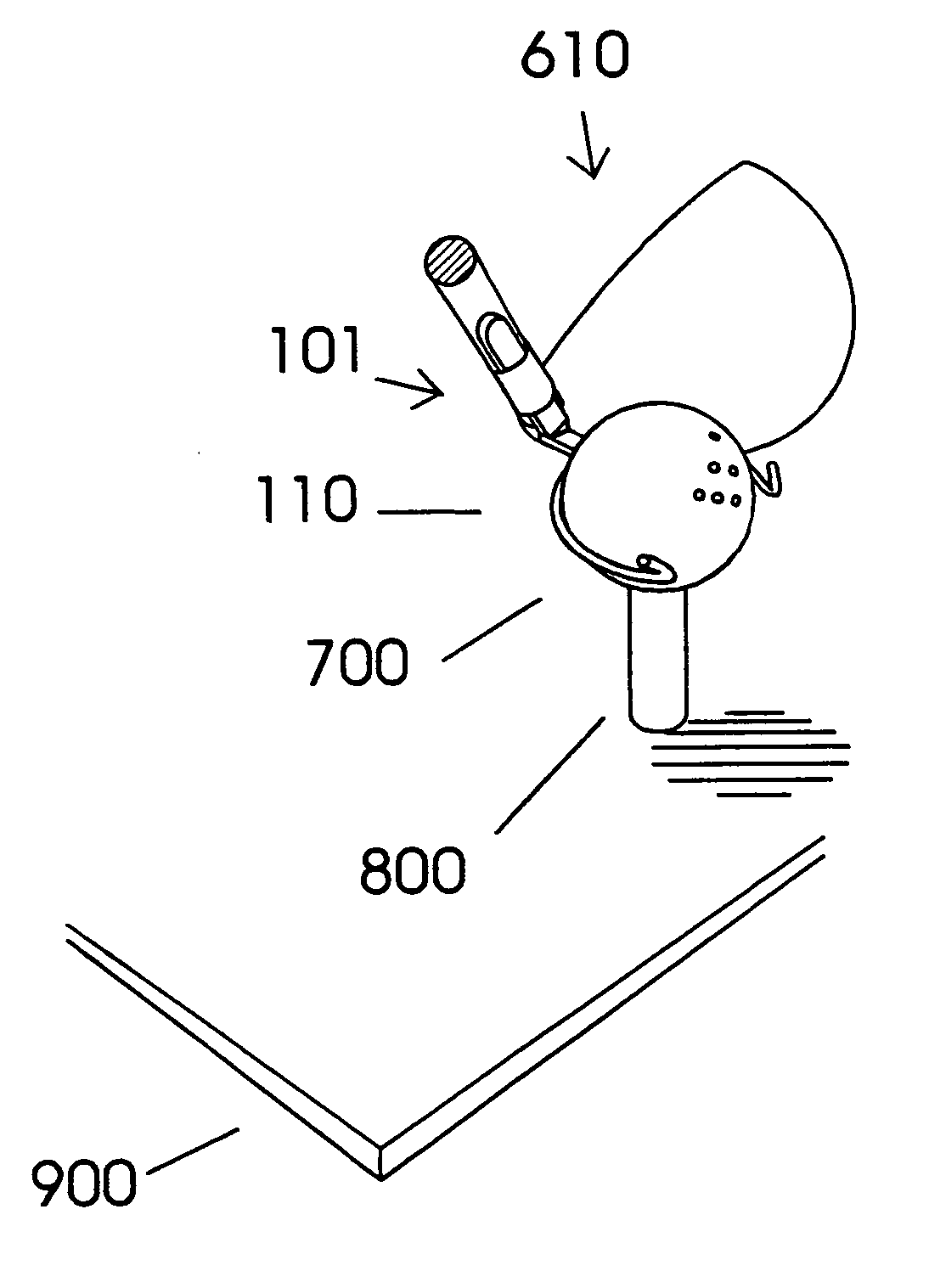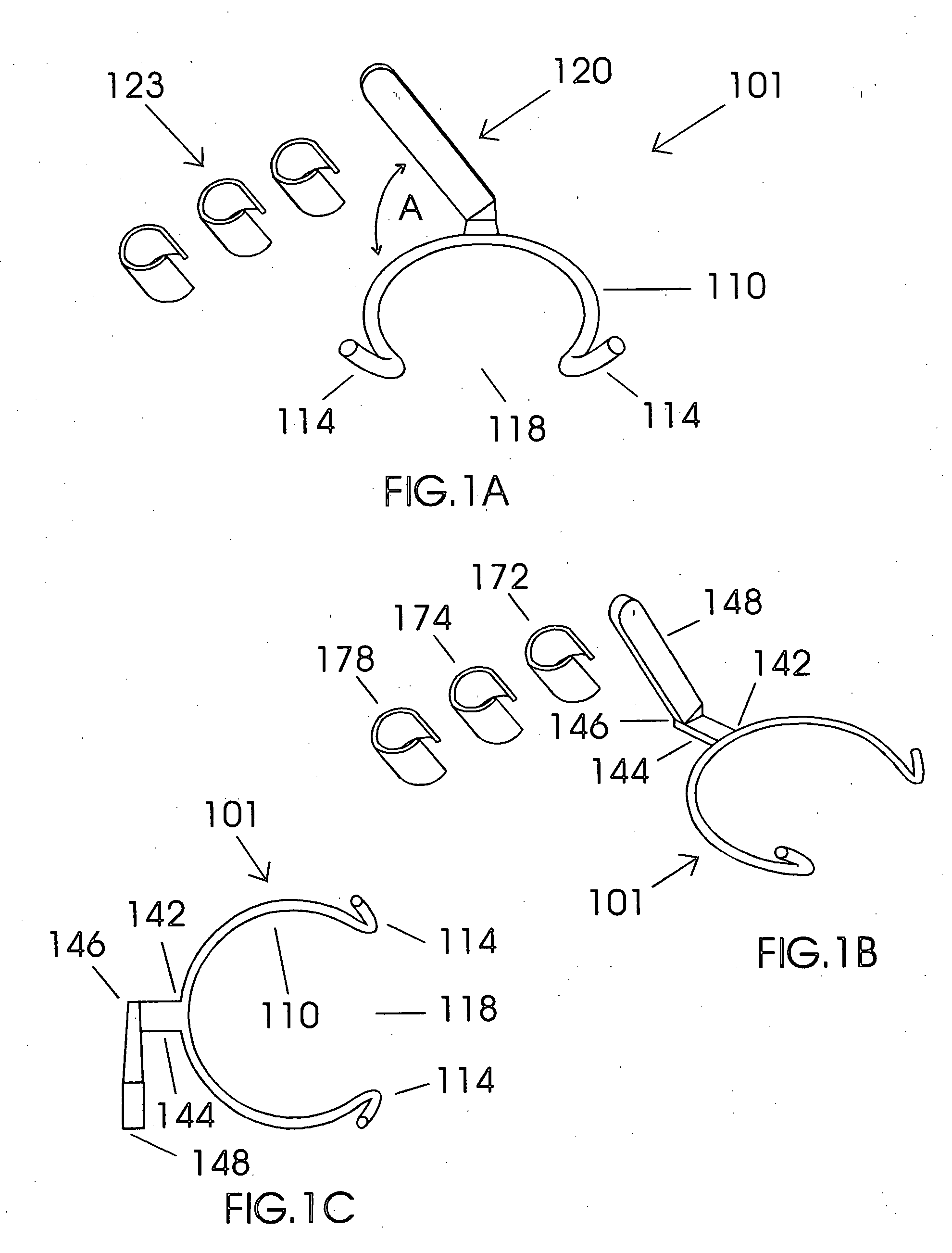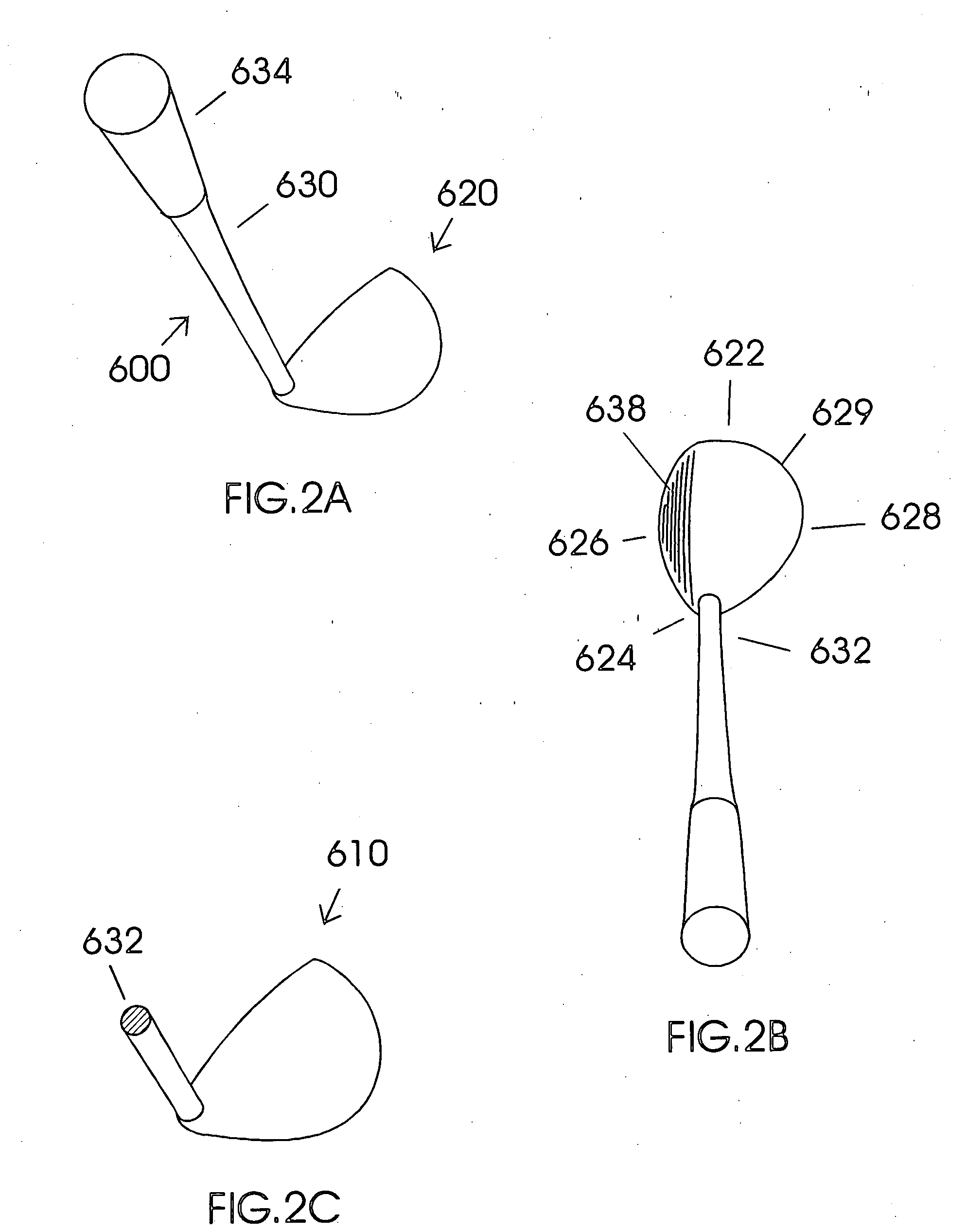Ball pick-up and tee-up aid
a golf ball and aid technology, applied in the field of golf ball pick-up and tee-up, can solve the problems of fatigue or injury to the legs and/or back, tedious and time-consuming, and put stress on the body, and achieve the effect of light weigh
- Summary
- Abstract
- Description
- Claims
- Application Information
AI Technical Summary
Benefits of technology
Problems solved by technology
Method used
Image
Examples
embodiment
FIG. 12(A, B): Rubber-T Embodiment
[0224]FIG. 12(A, B) show a head-mountable ball-tee-up-device 102 with a rubber-T-shape 950 glued between two seat-halves 952. The result is then glued to the post 144. This embodiment is used when the seat-halves 952 are made of a rigid material with little flexibility as can occur with metals such as stainless steel, titanium, or beryllium. Thus, the rubber-T-shape 950 provides the flexibility.
FIG. 12C: Ball-in-Cup and Hazard Retriever Embodiments.
[0225]FIG. 12C shows that the ball-tee-up-device 101 as attached to a handle such as a pole 954 (or the top of a golf club) to pick-up the ball 700 from a cup 966. The cup 966 is about 114.3 millimeters (4.5 inches) in diameter. The ball 700 is about 42.871 millimeters (1.68 inches) in diameter. After the ball 700 has been extracted it can be removed from the tee-up-device 101 by either a reverse application of the scoop-method or by merely tapping the ball 700 on the ground and letting the ball bounce ...
PUM
 Login to View More
Login to View More Abstract
Description
Claims
Application Information
 Login to View More
Login to View More - R&D
- Intellectual Property
- Life Sciences
- Materials
- Tech Scout
- Unparalleled Data Quality
- Higher Quality Content
- 60% Fewer Hallucinations
Browse by: Latest US Patents, China's latest patents, Technical Efficacy Thesaurus, Application Domain, Technology Topic, Popular Technical Reports.
© 2025 PatSnap. All rights reserved.Legal|Privacy policy|Modern Slavery Act Transparency Statement|Sitemap|About US| Contact US: help@patsnap.com



